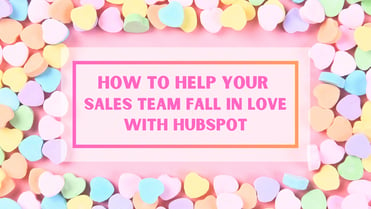
October 30, 2012
Use Your Blog as a Lead Generating Service



One of the most common questions that business owners and executives ask about marketing is "Where is the ROI?" The reasons are simple: marketing has traditionally been hard to pin down, and the benefits of it are difficult to prove. With an inbound marketing plan though, you can track exactly what's effective, and even continue to use the content you create as a lead generating service.
Here's how it can work:
We've all fallen prey to the idea that if we write attention grabbing headlines on something topical, then we'll get a ton of traffic. That may be true, but how much of it is qualified? Also, how much shelf life does something like that have? Your post about a new Apple product might be really popular for a few days, but the best type of content is evergreen, and continues to pull people into your website.
Focus instead on long-tail keywords, that aren't as heavily contested, but also signify a well-qualified searcher. People who know what they're looking for have already been convinced, to some degree, that what you're talking about is important to them. From there, it's important to give them a reason to keep researching their questions with you.
Talking about really specific issues within your industry can be surprisingly beneficial. People increasingly want to read all they can about something before talking to a salesperson. You can have the best sales team in the world, but it doesn't matter if no one wants to talk to them!
Instead, ask your salespeople what some common questions are that they face. Build out your content strategy from there. Assume that if you don't answer a question from a prospect, that they'll buy from someone else who will.
The sales team can be an untapped well of information, so involve them in the direction of the content. Bringing in qualified leads who already understand your offerings can be a big incentive for them.
Context is the next big thing in online marketing, but we're still in it's infancy. What is basically means is delivering the right message, to the right person, at the right time. It's no small task!
The first thing you can begin to think about are your different buyer types. We call them Personas. That helps you to think about the different types of things that matter to different people. You can tailor your message and offers to the different types of people that could be interested in your company.
Then you have to pair your buyer types with where they are in the buying cycle. This can get complicated, so if takes pulling in several people over time to nail this down, don't feel bad (additionally, this is where having some outside help can really be beneficial). Try to think about where people enter into the funnel, and what stages they go through as they consider whether to buy from you or not.
Once you have the content and stages decided upon, you can leverage a marketing automation solution to begin to nurture leads through the process, by sending them content that picks up where they left off. If someone has been in the learning stage, you'll want to send them content that nudges them into the evaluation stage.
Tying all of this together is no easy task. Plus, there's always ways for this to be continuously refined. Convincing your marketing that their goal is to generate leads can feel like a narrow focus for some, so putting it in the context of a much larger system like this can help to make sense of it all.
Blogs have long been a staple of an online marketing plan, but really leveraging them throughout the sales process is where their future begins. In order for your website to be a lead-generation machine, you'll need some content to fuel it.


